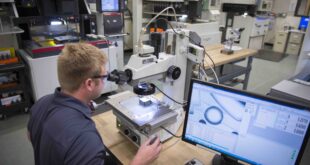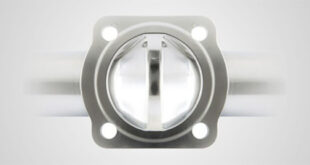Spanning the Piscataqua River between Portsmouth, New Hampshire, and Kittery, Maine, the Memorial Bridge has served as a landmark since it opened in 1923.
The vertical lift bridge, originally designed by J A Waddell, bears a nearly century-old plaque marking it an official memorial to New Hampshire military casualties of World War I.
The original bridge, deemed structurally deficient, was demolished in early 2012, and the new, similarly designed bridge, was constructed on the original piers.
The design of the new Memorial Bridge pays homage to Waddell’s original architecture, maintaining as much of the original look as possible, while updating technology to 21st century ideals for reliability and safety.
According to Stephen DelGrosso of Archer Western Contractors, tasked with the design and build of the new bridge: “Cost saving, both short- and long-term, was the focus at each decision point during the design and construction plan. Our primary means of reducing the cost of maintenance and repair was to create and build a structure that would simply not need costly maintenance.”
Reduce maintenance and increase overall reliability
To reduce maintenance and increase overall reliability of the bridge, especially in the moving areas, technologies in the lift mechanism were updated with the inclusion of igus cable management systems, custom designed with the help of their projects engineering and installation team.
The lift mechanism travels a total of 40 vertical metres at an average speed of just over 1m/s to raise the centre third of the bridge to allow for passing vessels.
The new bridge includes a faster lift-cycle time when compared to the original, thanks to an innovative truss system, which eliminates the need of gusset-plates.
As well as enhancing the reliability and safety of the structure, it also allows for much greater visibility for the operators while improving their safety.
Energy chains and continuous-flex cables
Hanging inside the lift mechanism, the rugged plastic energy chains and continuous-flex cables were installed to maximise reliability and uptime, while reducing costs when compared with previous, less dependable technologies. This cable management system replaced the original design’s hanging cables, typically used in vertical installations.
Hanging cables are typically very expensive custom designs, which combine several cables into a single hybrid cable to provide all power, data, etc.
As they are custom built for the project at hand, hanging cables also tend to have long lead-times, which can back up project deadlines and run costs up further.
Upon installation, they also require extensive testing, to the point which many bridge project proposals will outline the full test procedure as a part of the initial agreement, including who must be present as a test witness.
After installation, the repeated movement of the lifting mechanism may ultimately lead to breaks and damage to the cables used to feed power to the system’s motors.
The cable management system, a variation of the igus E4 energy chain series, was selected for the application, taking harsh Northern New England weather and wind, as well as moisture, UV, and chemical exposure into consideration.
The energy chains were pre-harnessed with guaranteed chainflex continuous-flex cables with heavy duty CFXL strain-relief clamps, staggered for easier access while in the long, hanging final orientation.
Each cable installed, including CF300 and CF9 motor cables, CF34 power cables, and 4-core CFLG fibre optic data cables, were (and continue to be) extensively batch-tested in real-world application settings over billions of flexing cycles prior to installation.
These were selected from over 1,350 chainflex cable types to find the most reliable options for the bridge application, including the length of the vertical installation, bend radius and flex cycle, environmental factors, and so on.
The igus projects team worked closely with the bridge’s design and maintenance teams, creating a custom metal trough to house the cable management system, blending igus design principles with the bridge itself to create a custom solution to work inside the original design’s envelope.
A combination of structural steel plates, some more than 10mm thick were used to create the structure, which was designed to accommodate wind loading, sea, salt, and UV exposure, as well as bridge design safety standards and customer requests.
The system was, on request, designed for a 50-year lifespan. A custom weather-seal brush system was also installed to keep icing to a minimum and prevent any freezing or hindrance of free movement of the energy chain.
The new Memorial Bridge, which opened to traffic in August of 2013, includes biking and pedestrian lanes, and is proposed to be made a part of the East Coast Greenway, stretching from Calais Maine to Key West, Florida.
 Engineer News Network The ultimate online news and information resource for today’s engineer
Engineer News Network The ultimate online news and information resource for today’s engineer

